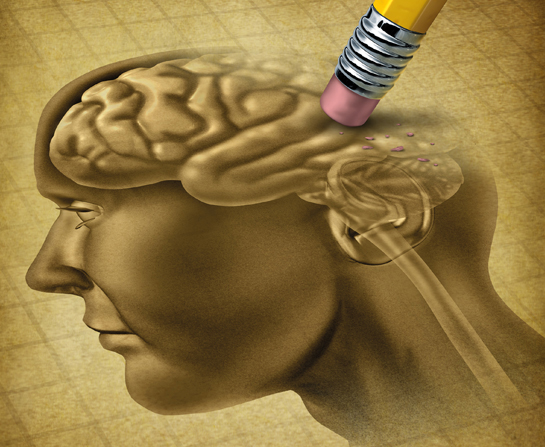Stop It From Striking You! Hard!
April 28, 2022 Return

troke strikes its victims swiftly and mercilessly, leaving survivors in debilitating conditions to recover from.
According to the National Stroke Association of Malaysia (NASAM), stroke is the third leading cause of mortality in Malaysia with an estimation of 40,000 Malaysians suffering a stroke at some point in their lives. And this can happen to anyone of any age. You may even die if swift action is not taken. Scary, eh?
Who is at risk?
- Stroke risk increases with age
- Smokers
- Diabetics
- Alcoholics
- People with a family history of stroke
- People who had prior stroke
- People with high blood pressure
- People with high cholesterol levels
A stroke is when the blood supply to the brain is either blocked or ruptured. This disrupts and deprives the brain cells of oxygen and nutrient supply. The part of the brain involved may start to die and affect certain bodily functions. The 3 kinds of stroke are:
Ischemic stroke: Blood supply to the brain is clogged by fatty deposits (atherosclerosis) or a blood clot.
Haemorrhagic stroke: Blood vessel ruptures and bleeds into the brain. This can be due to aneurysm, where a weak, thin spot in the artery balloons out and burst.
Transient ischemic attack: Otherwise known as ‘mini stroke’, it is a temporary occurrence where lesser blood supply than normal gets into the brain. This may last from a few minutes up to a day and clears off after. It can be a signal of an impending full stroke. Report to your practitioner if this happens.
But, it does not have to be that way. There are preventive steps to better prepare you from the imminent perils. Experts believe that 80% of stroke cases can be prevented, except those factors that cannot be controlled such as age, ethnicity and family history.
Keep blood pressure in check
The heart, being the main blood driver, pumps and circulates blood to our whole body. If the heart pumps harder due to reasons such as a blocked artery, this increases blood pressure and in turn, a stroke risk.
- Have your blood pressure checked every 1 or 2 years by a practitioner. Or better still, purchase a blood pressure monitoring device. The ideal blood pressure should lie between 80 and 120.
Do you know that about 2 million brain cells die within the first minute of a stroke?
Quit smoking
Smoking can result in atherosclerosis, otherwise known as artery hardening. The plaque that builds up within the artery may partially or fully block the blood supply to organs and tissues. This, then, results in an increased blood pressure and stroke risk.
- Seek help from a doctor on ways to quit smoking
- Use nicotine patches and gums
- Join support groups and programmes that can help you to quit
Get tested for diabetes and cholesterol levels
High blood sugar and cholesterol levels are contributory factors to the likelihood of a stroke. Lower your risks by:
- Getting screened for blood sugar and cholesterol levels every 3 years after age 45, especially if you’re overweight/obese
- Seek advice from health experts on diet and lifestyle choices
Call 999 whenever a stroke is suspected. Don’t delay.
Drink in moderation
Consume alcoholic beverages in moderation to avoid stroke. Limit your consumption to 1 drink per day and have a couple of ‘alcohol-free’ days.
Eat a balanced diet
A healthy, balanced diet promotes better health and in return, lowers your stroke risk.
- Avoid a diet high in salt, saturated fats and cholesterol
- Consume at least 8 to 10 servings of fruits and vegetables per day
Exercise, exercise!
A healthy weight can be maintained with exercise. Obesity and physical inactivity are linked to increased stroke risk. Staying active may reverse this effect as it can lower blood pressure, prevents blood clotting while shedding some weight.
- Allocate at least 30 minutes per day to exercise.
- Vary the types of exercise , so that the whole body is able to work out equally
- Take the stairs instead of the elevator
- Do a brisk walk on lunch breaks or if you are walking to the station
Should you take aspirins?
It is best to consult your doctor about aspirin use for stroke prevention. It can bring adverse side effects and may interact with certain pre-existing medications.
Act fast, beat the time!
Apply the FAST acronym to remember sudden stroke warnings. Dial 999 right away when it happens.
F for Face Drooping – Pay attention to the person’s face. Is it numb? Does it droop on one side? Get the person to smile. Is the smile even? It could be a stroke, if it is not even.
A for Arm Weakness – Does the person experience weakness in one arm? Get the person to raise both arms. Does one of the arms drift downward?
S for Speech Difficulty – Is the speech slurred? Is the person having difficulty understanding or talking to you? Get the person to repeat a simple sentence, such as “How are you?” Is it repeated accurately?
T for Time to call 999 – If the person exhibits any of the symptoms, dial 999 and promptly get the person to the hospital. Also, note the time of occurrence.
*Adapted from ‘Spot A Stroke’. Found in American Heart Association.
References:
American Heart Association. Available from www.strokeassociation.org
Blood Pressure UK. Available from www.bloodpressureuk.org
Liebman, B. (2007). Stroke: How To Avoid A Brain Attack. Nutrition Action Health Letter. 34(2): 1-7.
National Stroke Association of Malaysia. Available from www.nasam.org
Women’s Health. Available from www.womenshealth.gov
If you like this article, do subscribe here.
